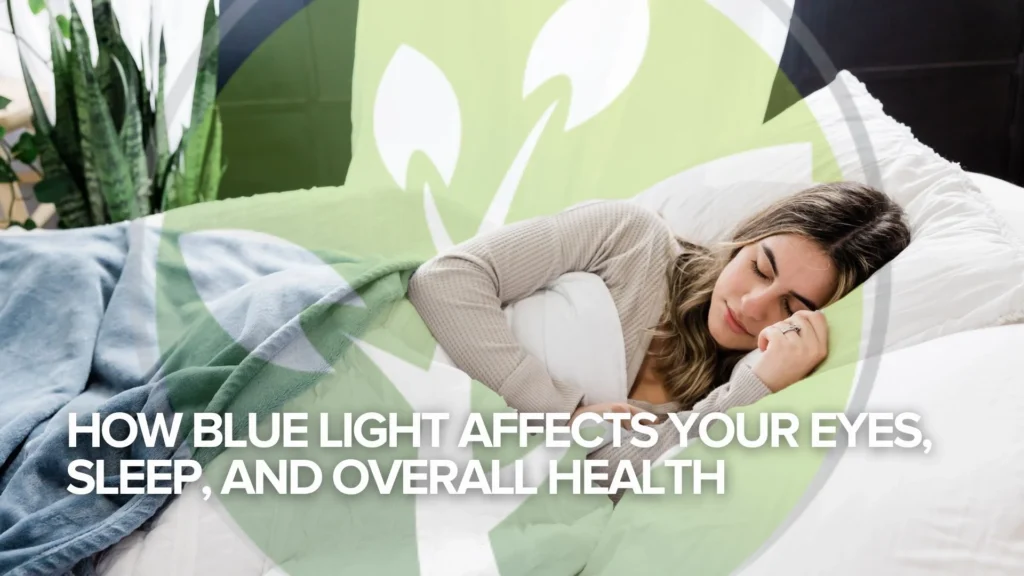From phones and tablets to LED lights and laptops, blue light is everywhere. While it plays a natural role in our environment (hello, sunlight!), today’s overexposure to artificial blue light is raising questions about how it may be impacting our eyes, sleep patterns, and general well-being.
Let’s take a closer look at what blue light is and how it might be affecting more than you think.
🔷What is Blue Light?
Blue light is a high-energy visible (HEV) light found in both natural sunlight and artificial sources like digital screens, fluorescent bulbs, and LED lights. During the day, blue light can help boost alertness, reaction times, and mood. But too much exposure—especially at night—can have unintended effects.
👁️ The Eyes: Digital Fatigue is Real
Staring at screens for long periods can lead to something called digital eye strain or computer vision discomfort. Common sensations include:
- Eye tiredness or blurred vision
- Dry, irritated eyes
- Difficulty focusing
While blue light isn’t the only factor, its intensity and proximity (like holding your phone close to your face) can increase strain over time.
😴 Sleep: The Light That Keeps You Awake
Blue light plays a big role in regulating your circadian rhythm—your body’s natural sleep-wake cycle. When the sun sets, your body should begin producing melatonin, a hormone that signals it’s time to rest.
But late-night screen time? It inhibits melatonin production, confusing your body into thinking it’s still daytime. That’s why scrolling in bed or falling asleep to the TV might leave you feeling foggy the next morning.
🧠 Beyond the Eyes: Blue Light and Your Overall Health
Ongoing blue light exposure, particularly when it disrupts sleep, may also affect:
- Cognitive clarity: Poor sleep impacts focus and memory.
- Mood balance: Chronic fatigue is linked to mood fluctuations.
- Cellular rhythm: Irregular sleep can affect your body’s natural cycles of repair and rejuvenation.
🌿 How to Manage Blue Light Exposure
- Use “night mode” settings on your devices to reduce blue light after sunset.
- Follow the 20-20-20 rule: Every 20 minutes, look at something 20 feet away for 20 seconds.
- Limit screen time before bed and consider using blue light blocking glasses.
- Prioritize natural light during the day to keep your circadian rhythm on track.
✨ Where NANO SOMA® Fits In
You can’t always avoid screens — but you can support your body in staying resilient.
NANO SOMA works at the cellular level, helping your body naturally maintain balance, vitality, and clarity* — even in a world filled with artificial light.
Here’s a unique tip: Many users apply NANO SOMA by spraying it directly into the eyes. It’s one of the ways they choose to support the body’s natural ability to maintain clear, refreshed vision* in today’s screen-focused world.
📖 Curious how this all-natural nano-emulsion fits into your wellness routine?
Click the link below to see how NANO SOMA can support your body from the inside out — eyes included.*
Are You Ready To See What It Can Do For You?
Tap the button below and discover how you can!
*These statements have not been evaluated by the US Food and Drug Administration. This product is not intended to diagnose or prescribe for any medical condition, nor to prevent, treat, mitigate, or cure such condition(s). If you have any illness or medical condition, consult your healthcare provider.


